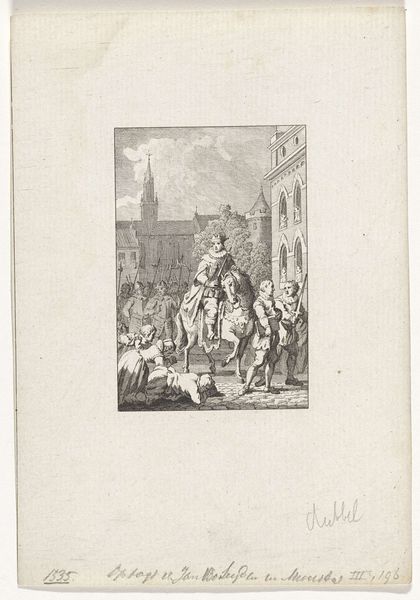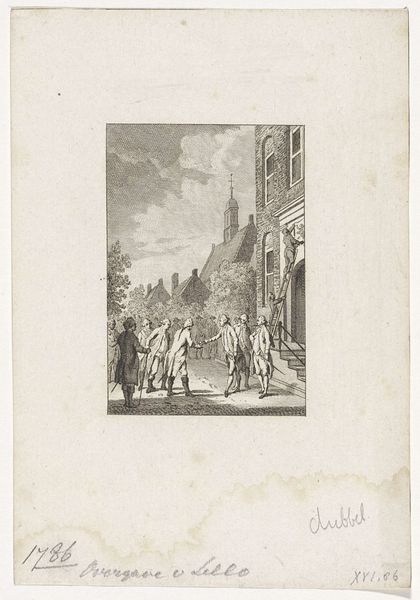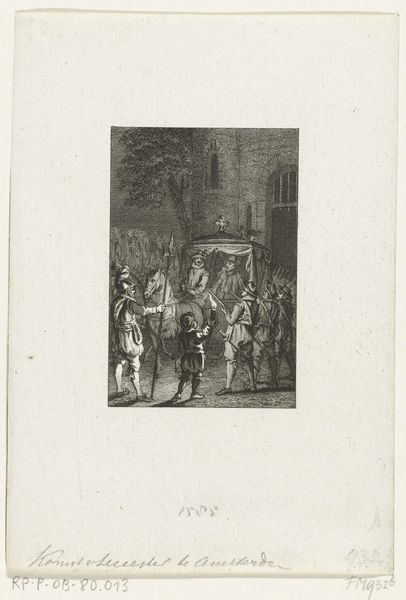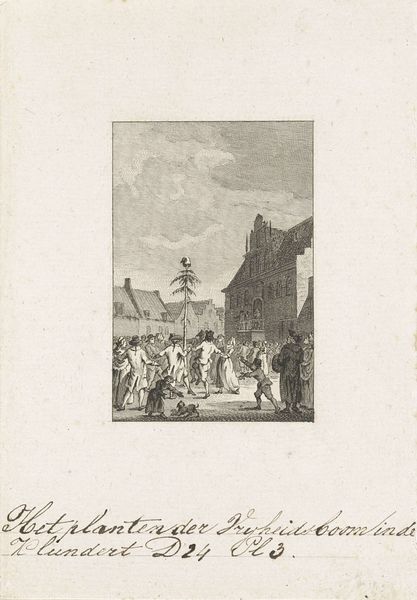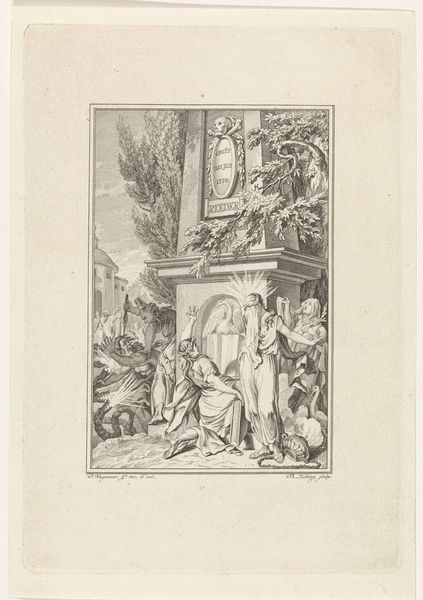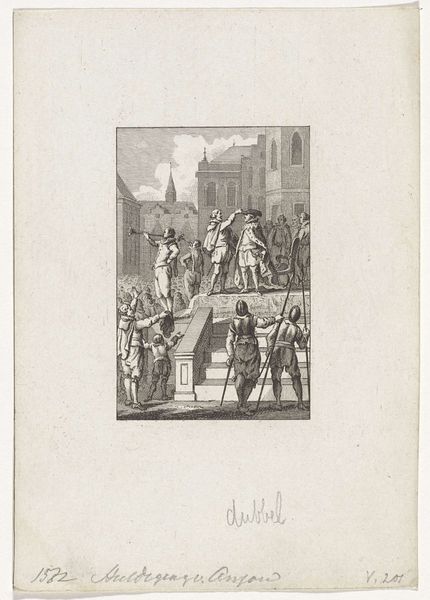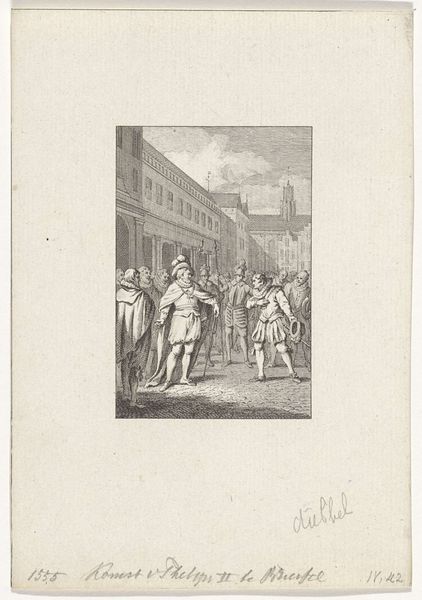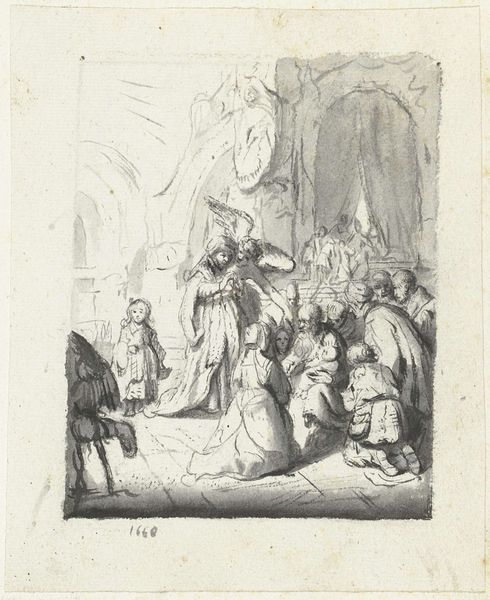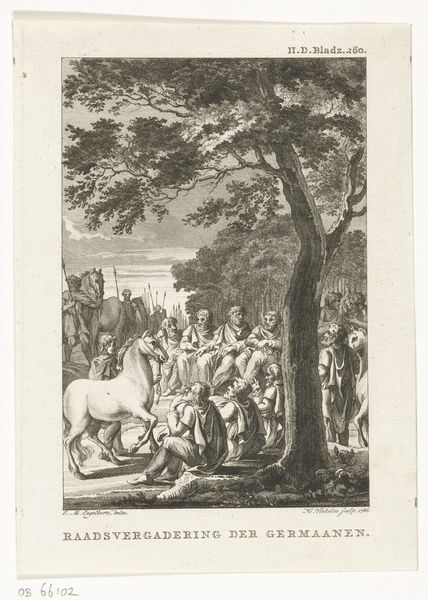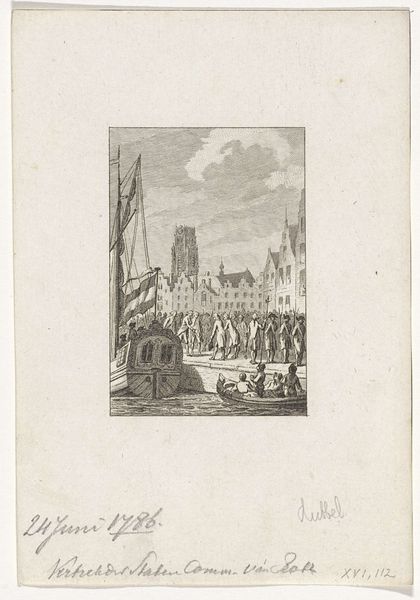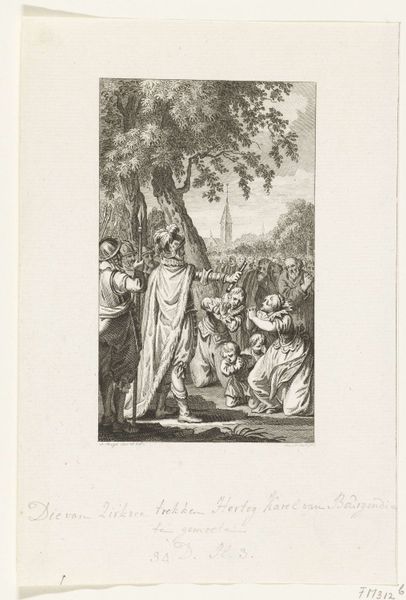
Dimensions: height 167 mm, width 114 mm
Copyright: Rijks Museum: Open Domain
Editor: This engraving by Reinier Vinkeles, made sometime between 1780 and 1795, depicts the people of Utrecht pleading for peace from Count Willem IV in 1345. It’s a pretty stark image, mostly greyscale, with a really distinct visual hierarchy showing figures of power. I am interested to know, what’s your read on it, from a historical perspective? Curator: Well, this print offers a fascinating lens through which to view 18th-century perceptions of the Dutch past and power dynamics. While seemingly a straightforward historical depiction, it's essential to recognize that Vinkeles, along with his contemporaries, was interpreting events from the late medieval period through a distinctly Enlightenment-era worldview. Consider, for instance, the almost theatrical staging of the scene. Doesn’t it suggest an emphasis on morality? Editor: Yes, there's definitely a posed feeling. Is that common for prints like this, made quite a few centuries after the event itself? Curator: Precisely. The artist may not have had the means to ensure total accuracy of every element depicted; rather, artists often drew on existing imagery and styles. Also consider how such historical prints, reproduced and disseminated widely, served to shape a particular narrative of national identity and political legitimacy. Who held power, and how was that authority conveyed to a broader public through such images? Editor: So, the print is not just a neutral record, but almost a political statement, reflecting ideas about leadership and submission prevalent at the time it was created? Curator: Exactly. And consider its display within the Rijksmuseum setting. It is very interesting how a relatively small print from the 1780-90's now informs our contemporary experience of historical events. It encourages thinking about whose perspectives get institutionalized and whose interpretations become “official”. Editor: That’s a really insightful way to think about it, as more than just a scene but also its effect as a representation of history! I'll definitely look at art with an understanding of context from now on.
Comments
No comments
Be the first to comment and join the conversation on the ultimate creative platform.
